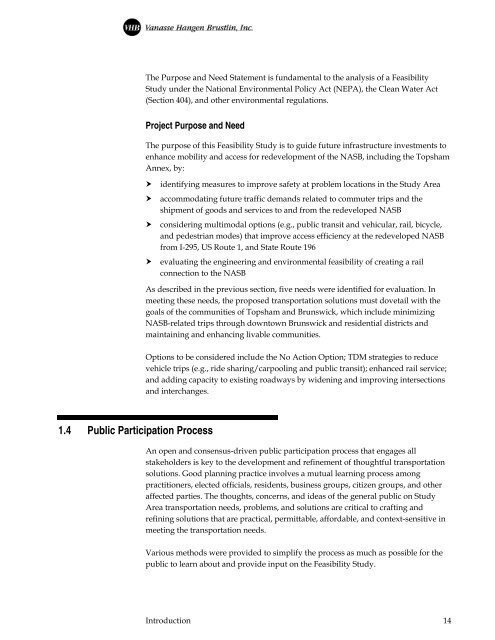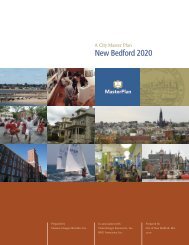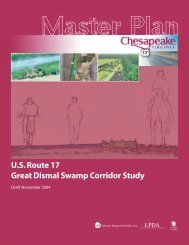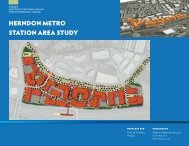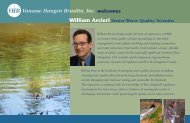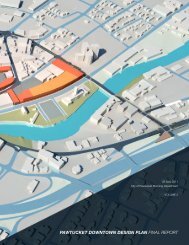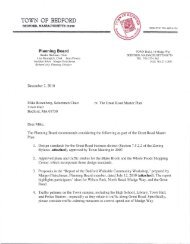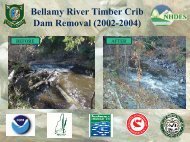Final Report - VHB.com
Final Report - VHB.com
Final Report - VHB.com
Create successful ePaper yourself
Turn your PDF publications into a flip-book with our unique Google optimized e-Paper software.
The Purpose and Need Statement is fundamental to the analysis of a Feasibility<br />
Study under the National Environmental Policy Act (NEPA), the Clean Water Act<br />
(Section 404), and other environmental regulations.<br />
Project Purpose and Need<br />
The purpose of this Feasibility Study is to guide future infrastructure investments to<br />
enhance mobility and access for redevelopment of the NASB, including the Topsham<br />
Annex, by:<br />
identifying measures to improve safety at problem locations in the Study Area<br />
ac<strong>com</strong>modating future traffic demands related to <strong>com</strong>muter trips and the<br />
shipment of goods and services to and from the redeveloped NASB<br />
considering multimodal options (e.g., public transit and vehicular, rail, bicycle,<br />
and pedestrian modes) that improve access efficiency at the redeveloped NASB<br />
from I-295, US Route 1, and State Route 196<br />
evaluating the engineering and environmental feasibility of creating a rail<br />
connection to the NASB<br />
As described in the previous section, five needs were identified for evaluation. In<br />
meeting these needs, the proposed transportation solutions must dovetail with the<br />
goals of the <strong>com</strong>munities of Topsham and Brunswick, which include minimizing<br />
NASB-related trips through downtown Brunswick and residential districts and<br />
maintaining and enhancing livable <strong>com</strong>munities.<br />
Options to be considered include the No Action Option; TDM strategies to reduce<br />
vehicle trips (e.g., ride sharing/carpooling and public transit); enhanced rail service;<br />
and adding capacity to existing roadways by widening and improving intersections<br />
and interchanges.<br />
1.4 Public Participation Process<br />
An open and consensus-driven public participation process that engages all<br />
stakeholders is key to the development and refinement of thoughtful transportation<br />
solutions. Good planning practice involves a mutual learning process among<br />
practitioners, elected officials, residents, business groups, citizen groups, and other<br />
affected parties. The thoughts, concerns, and ideas of the general public on Study<br />
Area transportation needs, problems, and solutions are critical to crafting and<br />
refining solutions that are practical, permittable, affordable, and context-sensitive in<br />
meeting the transportation needs.<br />
Various methods were provided to simplify the process as much as possible for the<br />
public to learn about and provide input on the Feasibility Study.<br />
Introduction 14


